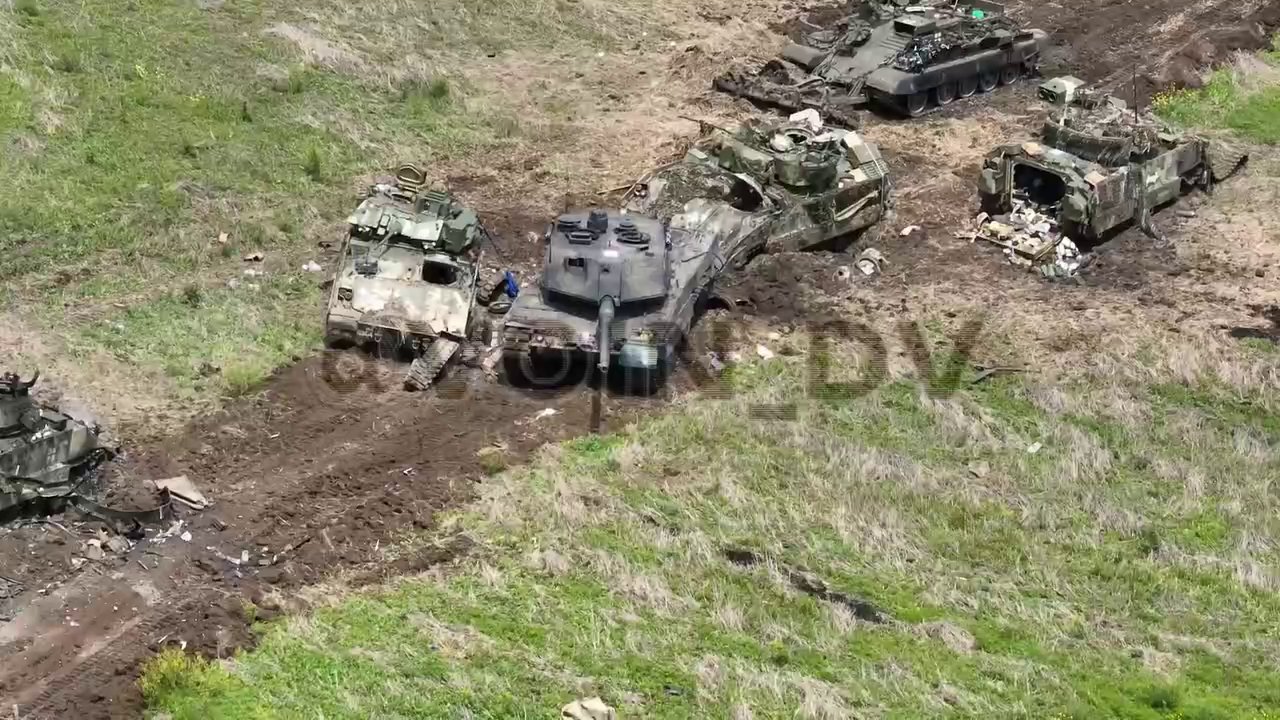The recently delivered Abrams tanks from the US to Ukraine are anticipated to bolster the ongoing Ukrainian counter-offensive efforts. However, a prominent military expert has pointed out that these tanks will face heightened vulnerability and increased risk on the battlefield due to the extensive deployment of UAVs.
Ukrainian President Volodymyr Zelenskyy recently announced the arrival of the first batch of US M1 Abrams tanks in Ukraine, a development that Pentagon officials have also confirmed.
The United States has committed to providing Ukraine with 31 Abrams tanks. The precise number of tanks that have been delivered remains uncertain.
However, according to a June report by Politico, the initial shipment included 10 M1A1 tanks, with the remaining 21 scheduled for delivery later in the fall. The United States armed Ukraine with refurbished M1A1 tanks rather than modern M1A2s to accelerate the delivery process.
Even though the M1 Abrams tanks are renowned for their battlefield capabilities, this limited number of tanks is unlikely to impact Ukraine’s counter-offensive efforts substantially.
On the other hand, the Biden administration’s choice to supply Ukraine with these tanks was a diplomatic gesture.
This commitment to send tanks is often attributed to influencing Germany’s final decision to authorize other countries to offer Ukraine additional heavy weapons and platforms, such as Leopard 2 main battle tanks.
Leopard 2 main battle tanks were promptly deployed in June of this year. At the time, videos showing the destruction of some of these tanks were also widely circulated on the internet.
Since then, questions have arisen about whether the Abrams tank provided by the US would genuinely have a substantial impact on the battlefield, even though it is frequently touted as a potential game-changer.
This concern becomes even more pronounced when considering Ukraine’s enduring absence of air supremacy.
Amid these discussions, a European military expert contends that the deployment of these tanks will not have a substantial impact on the ground, emphasizing that the effectiveness of the Abrams could be diminished due to Russia’s use of drones.
Abrams Tanks Vulnerable To Russian Drones?
In a recent interview with the newspaper Der Tagesspiegel, Gustav Gressel, a military expert at the Germany-based European Council on Foreign Relations (ECFR), discussed the increased vulnerability of Abrams tanks supplied to Kyiv by the US in light of evolving battlefield dynamics in Ukraine.
Gressel said that the rapid proliferation of drones during the ongoing conflict has significantly altered the threat landscape.
As drone technology advances, the traditional armor protection of tanks like the Abrams may not be sufficient to withstand the precision strikes these unmanned aerial vehicles can deliver, making them more susceptible to attacks on the frontlines.
In his assessment, he contended that the delivery of Abrams tanks to Ukraine is a prime example of how time can significantly influence arms supplies.
Gressel highlighted that the landscape of warfare technology is evolving swiftly, with the rapid proliferation of drones rendering Abrams tanks more susceptible.

He elaborated on this by pointing out that these tanks can now be identified and incapacitated at an accelerated rate. This analysis underscores the urgency for adaptive strategies and defenses in these evolving challenges.
Gressel suggested that Ukraine could have gained a critical strategic advantage in the fall of 2022 if they had access to Western battle tanks, considering that Russian forces had limited UAV capabilities then.
However, he noted that this advantage has diminished over time as the proliferation of drones has escalated.
Meanwhile, retired Russian Colonel Sergey Suvorov, an authority in armored vehicles, told state media that Russian forces frequently succeeded in destroying Western-made tanks provided to Kyiv, primarily due to what he termed as inadequate handling by Ukrainian personnel.
Suvorov explained that the Ukrainian command often dispatched Western equipment without adequate support, neglecting essential precautions like safe passage through minefields or conducting thorough reconnaissance.
As a result, these tanks often found themselves vulnerable and exposed, making them easy prey for various Russian weaponry—a situation succinctly summarized by the Russian expert.
- Contact the author at ashishmichel(at)gmail.com
- Follow EurAsian Times on Google News




